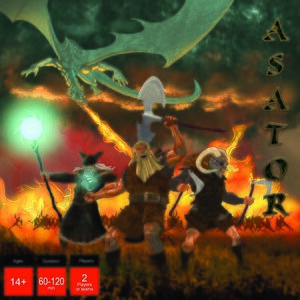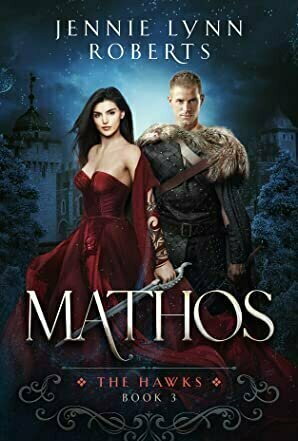
Samsung TV Media Player
Entertainment and Photo & Video
App
Just bought your internet connected Samsung Smart TV or already have one at home? Well, with this...

Samsung TV Media Player HD
Entertainment and Photo & Video
App
Just bought your internet connected Samsung Smart TV or already have one at home? Well, with this...

Sony TV Media Player
Entertainment and Photo & Video
App
>> Don't download when you don't have a > 2009 Sony TV with DLNA DMR Support. Just bought your...
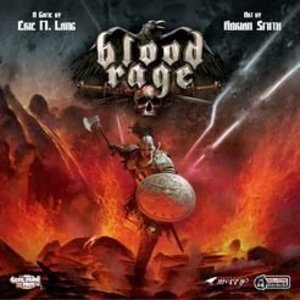
Blood Rage
Tabletop Game
"Life is Battle; Battle is Glory; Glory is ALL" In Blood Rage, each player controls their own...
Miniatures BoardGameGeekGreatness
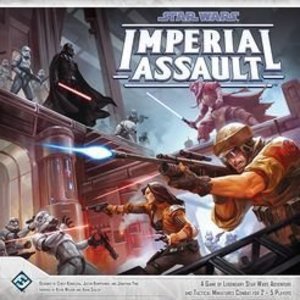
Star Wars: Imperial Assault
Tabletop Game
Star Wars: Imperial Assault is a strategy board game of tactical combat and missions for two to five...
Boardgames StarwarsGames MiniatureGames
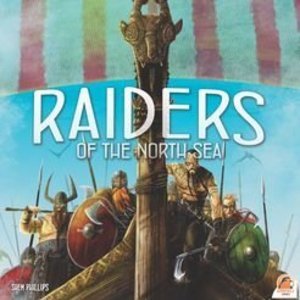
Raiders of the North Sea
Tabletop Game
Raiders of the North Sea is set in the central years of the Viking Age. As Viking warriors, players...
Boardgames vikinggames 2015Games
Purple Phoenix Games (2266 KP) rated Asator in Tabletop Games
Oct 20, 2020
Asator is a head to head (or teams) game of troop maneuvering and attacking using 30 identical miniatures on each side. Each mini acts as a platoon of three different kinds of armies, plus a Chieftan, Master, Wizard, and Dragon that all have different special abilities. The winner of Asator is the player who can eliminate their opponent’s leadership (Chieftan, Master, and Wizard).
DISCLAIMER: We were provided a prototype copy of this game for the purposes of this review. These are preview copy components, and I know that the final components will be slightly different from these shown. Also, it is not my intention to detail every rule in the game, as there are just too many. You are invited to download the rulebook, back the game through the Kickstarter campaign, or through any retailers stocking it after fulfillment. -T
To setup, place the battle mat on the table, and then players will place groups of minis on the field within the closest three rows of hexes in alternating turn fashion. Players will also take the two large Battle Sheets and a dry-erase marker to keep track of every one of their minis’ stats throughout the game. Each player will also choose five of the given 10 Wizard spell cards to use for the game, and each spell may only be used once during the game. Once all army minis are placed, the first player will move up to 20 units on the battlefield and attack opponent armies if possible. The game is now on and decimation is the goal.
Each mini type corresponds to a different group of armies, plus the dragon and three leader pieces. All armies of the same type have the same stats for movement, hit points (HP), armor rating (AR), and attack weapons. Also each mini is labeled on the bottom so keeping track of each unit is made a little easier. Obviously the leader pieces are more powerful and each has a special style of combat. The Master wields an axe and shield (which is broken after one hit) to increase AR and dole out the damage. The Chieftan wields a spear, twin axes, a bow, and a shield. Similar to the Master, the Chieftan’s shield is broken after an attack against him, and his spear is broken after a missed attack. The Wizard is not at all strong in melee, but has powerful spells at his disposal to be used for the disposal of enemy units.
Besides the leadership trio each side also brings a Dragon to the battle. Dragons can move slowly by land, but quite quickly by air. Once in the air he or she may deliver a Fire Blast that causes huge damage, but then the Dragon must ground themselves to regain stamina for flight. In addition, each player will have access to Cavalry, Infantry, and Bowmen, each with their own stat blocks and abilities.
This is all well and good, and is somewhat similar to the strategy one would use in Chess. Combat, however, is much more involved than that of simply moving into an enemy’s space and automatically overtaking it. In Asator combat victory is decided via a VERY pared down version of D&D combat. It uses a simplified d20-based attack versus the enemy Armor Rating (AR). Rolls over the AR of the enemy is a success and damage is dealt. Done. Some attacks require a roll of 2d6 for damage amount, like spells and Dragon attacks. That said, combat is decided using 1d20 and 2d6. That’s it.
The game continues in turns where the first player will move their pieces and attack, and then the next player will do the same until one player has defeated all three enemy leaders and earned the title of Asator – Master of War.
Components. Again, we were provided a prototype copy of the game, but most of the components are what will be received when the game is backed or purchased. That said, the game utilizes a cloth battle mat that folds into the box, four dry-erase Battle Sheets, two dry-erase markers, dice for both players, Wizard spell cards for both players, and 60 miniatures. The battle mat is great fabric quality with minimal art that doesn’t get in the way of play (much appreciated). The dry-erase components are good. The card quality is fine. The dice are black and white dice to correspond with players using the black or white minis, and are of normal quality. The minis are great and I enjoyed playing with them.
Now for the negatives of what is included in the box. First, the art. Now, there is very minimal art used throughout the game. It’s just not a focal point, and it shows in the game’s production. I found the sketch on the cover of the rule book (which is the same as the watermark on the Battle Mat) to be very cool, but the box cover art leaves some to be desired. Similarly, the Wizard spell cards use very generic-looking art icons with text for explanation. I am most certainly being hyper-critical here because flashy art on these components are certainly not needed to play or highly enjoy the game. For my tastes, though, I would like to see more polished art on these pieces as the art is so sparse throughout.
But how does the game feel? It’s truly quite good. I don’t play many wargames or 1v1 skirmish style games, so to present me with something like this and for me to enjoy it as much as I have has to be a sign of something good. Again, I am no strategic war general, but being able to employ different strategies every game is exciting. Testing out the different combinations of Wizard spell cards is fun for a tinkerer. And, of course, playing with a bunch of minis is always good fun.
There is a good game here, and I absolutely love the combination of Chess maneuverability with the simplified RPG d20 battle system. It works well in a game like this where each piece owns a stat block of which players will need to be mindful. I didn’t quite mention my favorite part of the rules yet either: natural 20 on a combat roll equals insta-death. Yes, even to the Dragon, which happened in my very first game. THAT is a cool rule that tripped up tactics quite often in my plays.
All in all this game is a great example of combining a couple sets of mechanics that wouldn’t be expected and creating a great gaming experience from them. I invite you to back the game on Kickstarter when it goes live if you are looking for that special game that is unlike many others you currently own. If the art were spruced up a bit I would be fawning all over it, but even without impressive art I still find I have the twitch in my brain to play it again and again. I wonder how many natural 20s I can roll in a game. Great, now I want to set it up and see…
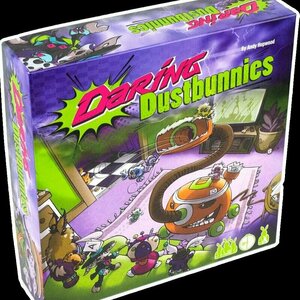
Daring Dustbunnies
Tabletop Game
Description from the publisher: You are one of the magical Dustbunnies living under the sofa....
Debbiereadsbook (1617 KP) rated Mathos (The Hawks #3) in Books
Nov 21, 2021
This is book 3 in The Hawks series, and you really MUST read books one, Tristan, and book 2, Val before this one. There is an on-going story arc across the series, that is not fully recapped. And you, cos I said so! I loved those books, and I loved this one too.
Mathos is a player, calls everyone darlin' and never spends more than one night with a woman. He's happy with his lot. So why then, does Lucilla push all his buttons and make him want things he never knew he wanted? She's a spoilt princess, and he just has to get her to the palace. Lucy, however, does not want to go. Her brother will kill her, and she's suffered enough. Finding out though, that Ballinor is dead and a far darker mind wishes to possess her, mean she has to trust Mathos, and his band of the Hawks.
I loved Mathos in the other books, and here he really does shine. Lucy (as Mathos begins to call her) shines also, but in an entirely different way.
Lucilla has been kept behind closed doors for so long, so she can't remember life before. Suffering at the hands of her brother and his cronies has been her life. She doesn't want to be controlled or coralled anywhere, but Mathos makes a good point. Getting to the palace will secure her future and mean she can make all the choices she wants. But Mathos creeps into her heart, and when he does what he does, you can feel how much Mathos means to her.
Mathos though, feels he does not deserve anyone, let alone a queen. No one can love him, if his own mother can't, surely? Walking away from Lucy and from his brothers was probably the hardest thing he ever did, but also the most stoopidest thing, EVER! But it's WHO that makes him see clearly for the first time in weeks that surprised me! Given as said someone has been missing since the first book, you'll understand why and I really pray that he gets some peace.
He's not next though! Tor is next and given whats said here, I'm intrigued as to what has happened between him and Keeley!
I'm loving this series, I really am! Please keep them coming, I still cannot see the bigger picture and what's going to happen!
5 full and shiny stars
*same worded review will appear elsewhere
Purple Phoenix Games (2266 KP) rated Of Knights & Ninjas in Tabletop Games
Jan 23, 2020
Of Knights & Ninjas is a card game about claiming enough treasure to ascend to kinghood and rule all the lands. You can accomplish this by sending forces to your opponents’ realms and stealing their glorious gems. The first lord to amass 10 gems will have sufficient wealth to assume the kinghood and rule all realms!
DISCLAIMER: We were provided a prototype copy of this game for the purposes of this review. These are preview copy components, and the final components may be different from these shown. Also, it is not my intention to detail every rule in the game, but to give our readers an idea of how the game plays. If you would like to read the rulebook in full, you may visit the publisher’s website, purchase the game through the publisher, back the game through the Kickstarter campaign, or through any retailers stocking it after fulfillment. -T
To setup, each player will take five gems of their preferred color in front of them. Shuffle the large deck of cards, and deal each player four cards (this rule was updated after our play-throughs). You are now ready to play!
On your turn, you will draw two cards from the deck (unless it’s the first draw of the game – that player will draw just one). You must now play a card to the table or discard a card from your hand. Cards that you can play from your hand will each have different abilities, and thankfully the designer will be providing a reference sheet for these, as there are many cards with wildly different abilities. This is also why I will not be explaining the entire rulebook.
Typically you will be able to play Fortify cards (castles, archers), Attack cards (knights, ninjas, etc), Respond cards, and Special cards (minstrels, jesters, etc). Fortify cards protect your gems from certain Attack cards, like an Archer only being able to attack another Archer, or a Dragon being able to attack a Castle – but not if an Archer is stationed there (logic). Although, a Ninja can scale a Castle wall, and a Catapult can destroy a Castle altogether (but not that pesky Archer that happens to be sitting on top)…
Attack cards are just that: they Attack. Each Attack card will show a number in a starburst icon in the upper right hand corner that signifies how many gems they are able to steal. Once an opponent is declared and an Attack card played, let’s say a 1-power Peasant, the defender may then play a card with the Respond keyword (which will also have a starburst number) to offset the number of stolen gems. If the attacker chooses, they may continue playing Attack cards against the same opponent in order to draw out all the Respond cards and come away with some sweet, sweet gems.
But maybe once all is said and done, and gems are about to change hands, another opponent plays a Special card – a Highwayman, for example. These characters will steal all the gems that are about to change hands (as if he was robbing the gem carriage en route to the new owner). But then again, perhaps yet ANOTHER opponent plays a Highwayman as well, and steals those gems a second time! You just never know when these Special cards will come out and how they may affect the best laid plans.
Play continues in this fashion until one player has amassed the 10 gems they require to win the game!
Components. Again, we were provided a prototype copy of this game, and we understand that components can change during the course of a successful Kickstarter campaign. That said, this game is a ton of cards and some plastic gem pieces. The art is stellar – cartoony, but whimsical and fun. The card layouts make sense and are very easy to read and understand. The gems are colorful and fun to play with. I only have one concern/suggestion/wish for the components here. I wish the individual card’s abilities were somehow printed on the cards themselves. That would alleviate the need for a reference sheet, but it would then detract from the cute art on the cards. So, maybe that wouldn’t be so great after all. I’m torn on that.
All in all, this game is super fun to play. It will be chaotic one moment, and strategically tense the next. Being able to whittle an opponent’s hand down to nothing and then slapping them with a King card to steal a huge chunk of gems is just so sneakily satisfying. Or sending your Ninja to infiltrate their unArchered (I know it’s not a word) Castle and slither away with the goods. Don’t get too attached to your gems, because you may find yourself without for several rounds. You can always rebuild, but make haste as your opponents will keep you down if you let them.
If you are a fan of games that are cute, fun, and relatively quick with a quirky, but light-hearted theme, then definitely check this one out.
